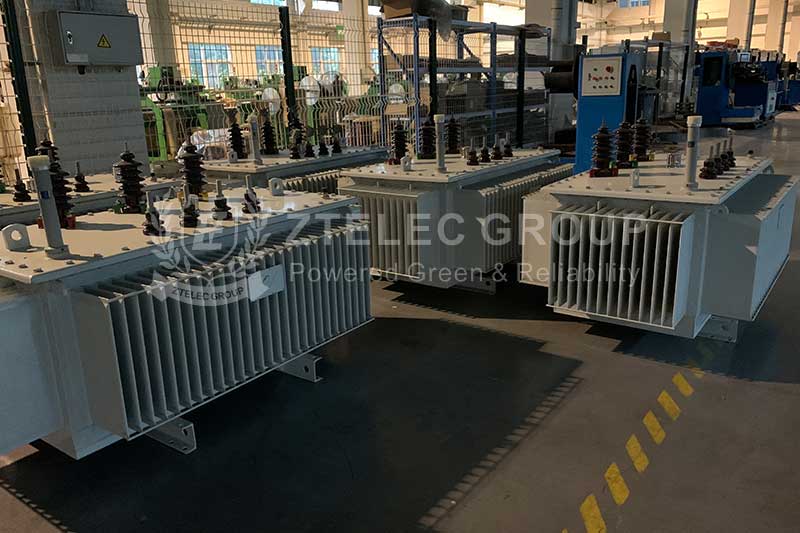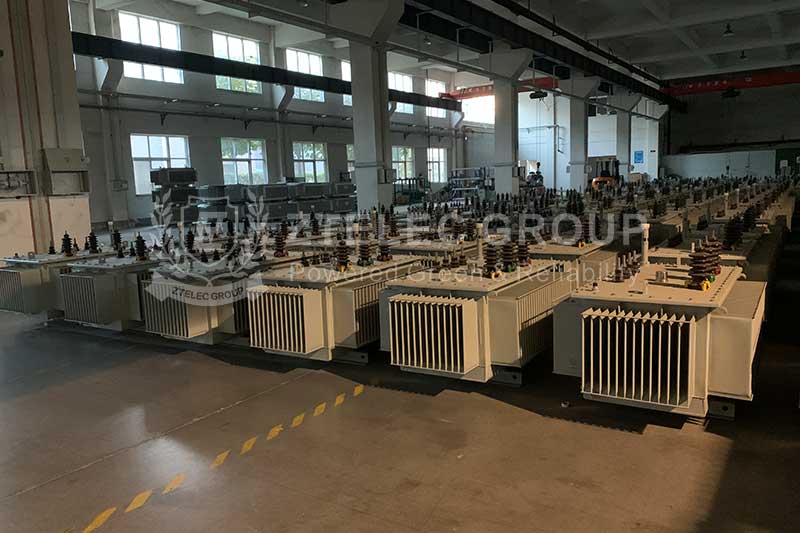How to keep a transformer cool?
Cooling of transformers is the process by which heat generated in the transformer is removed so that the transformer can be performing to the best efficiency. Heat is generated in the transformer while running and is produced by the excitation of the windings and core. If the temperature of the transformer continues to increase rapidly, it results in the degradation of the various parts, specifically the insulation materials, and could lead to the failure of the equipment.

How to keep a transformer cool?
Enhanced cooling facilities:
· Heat sink: The transformer is generally installed with heat sinks, which can be naturally cooled through the transformer shell and heat sink.
· Air cooling: The fan is used to blow the heat sink of the transformer to accelerate air convection and improve cooling efficiency.
· Water cooling: Some transformers are equipped with water cooling systems, which take away the heat generated by the transformer through water circulation. It is important to note that the water used must be purified water that has been filtered through industry to ensure that it does not conduct electricity.
Utilization of transformer oil :
· The oil-immersed transformer is filled with transformer oil with larger specific heat capacity. The heat generated during the operation of the transformer will cause the oil near the iron core and winding to expand and rise. Through the up-down convection of the oil, the heat can be dissipated through the radiator.
Optimize the operating environment:
· Ventilation: If the ventilation around the transformer is poor, it will cause the heat to be unable to dissipate. The ventilation of the transformer room can be enhanced, for example, by replacing the solid door of the transformer with a breathable mesh door, or, if conditions permit, by matching cooling devices such as fans to enhance the cooling effect.
· Regular cleaning: If the radiator of the transformer is not cleaned regularly, dust and impurities will accumulate, resulting in poor heat dissipation effect. Regular cleaning of the radiator of the transformer can improve the cooling effect.

Adjust the load:
· If the load of the transformer is too large, the temperature will be too high. The temperature of the transformer can be reduced by reducing the load.
Other points to note:
· Before taking any cooling measures, it is necessary to ensure safety, such as cutting off the power supply.
· The construction and maintenance of the transformer room is also critical to ensure that the transformer room is clean, free of dust and corrosive gases, and complies with relevant building codes and safety standards.
New technology application of transformer cooling
Intelligent cooling device:
Condensation intelligent rapid cooling device, which can produce dry cold air lower than the ambient temperature, which is transported to the transformer directly below the transformer through the pipeline, so as to achieve the cooling effect.
Phase-change material:
Use phase change materials (such as paraffin, hydration salt, etc.) to form a protective layer around the transformer. When the temperature rises, the phase change material absorbs heat and phase change, thus reducing the temperature of the transformer.
Heat pipe technology:
Using the process of evaporation, condensation and reflux of the heat pipe, the heat generated by the transformer is quickly transferred to the radiator to improve the heat dissipation efficiency.
- more+releated article
- 2025-12-13How to Select and Use Phenolic Cloth-base Lami
- 2025-12-13How Much Does Bakelite Sheet Cost? 2025 Price
- 2025-12-13Why are most 3240 epoxy boards yellow?
- 2025-12-13What are the Main Applications of FR4 Epoxy Bo
- 2025-12-13Why Does the Price of Insulating Paperboard Va
- 2025-12-13Heat-Resistant DDP Insulation Paper
- 2025-12-13Comparison of Heat-Resistant DDP Insulating Pa
- 2025-12-13G10 and FR4 Epoxy Boards: Commonly Used for Ge
- 2025-12-13The Price of Heat-Resistant DDP Insulation Pap
- 2025-12-13How to Choose Epoxy Laminate Materials for Gen





